More training institutes coming up
By N. Balasubramanian
 Ashok Leyland is known for its special initiatives with regard to driver training and development. Established in 1995, the company’s Driver Training Institute (DTI) at Namakkal, the first of its kind, has served as a benchmark in driver training ever since. The company focus is on three main aspects of inducting fresh drivers, inculcating a culture of road safety in drivers and imparting knowledge about fuel-efficient methods of driving.
Ashok Leyland is known for its special initiatives with regard to driver training and development. Established in 1995, the company’s Driver Training Institute (DTI) at Namakkal, the first of its kind, has served as a benchmark in driver training ever since. The company focus is on three main aspects of inducting fresh drivers, inculcating a culture of road safety in drivers and imparting knowledge about fuel-efficient methods of driving.

Mr. E.N. Surendran, Senior Manager, Driver Training, oversees the various operations at the institute. With a passion for driving, he made his first drive at the age of 12 and has 31 years of driving experience. Having mastered the art of traversing the path of the number ‘8’, that too in reverse, he could certainly be considered a perfect fit for being at the helm.
The institute is spread over 25 acres of land and has 12 trainers who have taken up the task of transforming the drivers through courses of varying duration and syllabi. In fact, some of the current trainers had originally come to the institute as trainees and subsequently opted to stay on and dedicate their lives for driver training. The institute has the complete backing of the company’s Managing Director, Mr. Vinod K. Dasari, who is keen on making the institute more contemporary with the use of simulators and advanced technology for training.
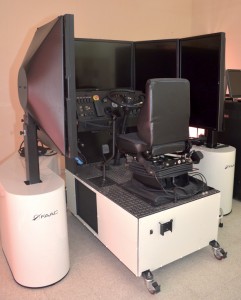 DTI has a spacious building that accommodates five large classrooms, a library, a model room, a laboratory, a conference room and an open-air theatre. Recently, a new sophisticated driving simulator worth Rs. 1 crore was installed to aid simulation training.
DTI has a spacious building that accommodates five large classrooms, a library, a model room, a laboratory, a conference room and an open-air theatre. Recently, a new sophisticated driving simulator worth Rs. 1 crore was installed to aid simulation training.
The test vehicles are available in multiple configurations to provide a comprehensive training routine for trainees. Some of the different configurations include 12 metre bus, 20 ft. tractor-trailer, 40 ft. tractor-trailer, multi-axle vehicle and vehicles fitted with front engine, rear engine, manual steering, power steering, constant mesh gearbox, synchro-mesh gearbox and air suspension. The basic fresher programme trainee is trained in all the different vehicles for a three-month period. Left-hand drive vehicles are also available, and training in light vehicles is given through a separate course.
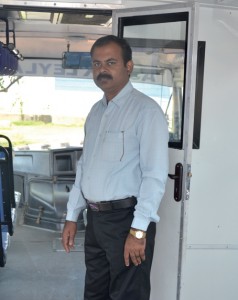
The training tracks which cover 15 acres and are equipped with electronic signals, road signs, markings and streetlights for night driving – the key main aspects of highway driving. It is evident from the layout of the test roads that all the skills needed for efficient driving have been kept in mind while designing the track. The four-lane road, six-lane road, parking yard, junctions, crossings, three-point turn and five-point turn roads reproduce real road conditions.
In addition, kuccha road (bad road), Y-shaped road, hair-pin bend, blind corner and hill driving simulation offer customised condition for trainees to improve their driving skill in a challenging terrain. For instance, the mine simulation road demands the use of the third differential lock which can be done only in multi-axle vehicles. Initially unloaded vehicles are used for training. This is subsequently followed by loaded ones. Training for night driving is given once a week.
DTI is constantly upgraded in terms of infrastructure, to keep pace with the improvement in vehicle technology and more challenging conditions for drivers.
Other institutes
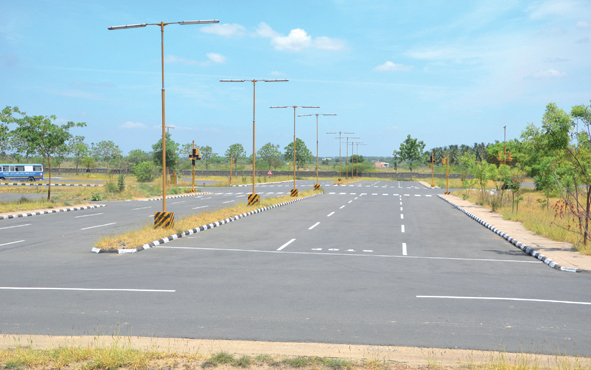 In 2005, Ashok Leyland’s second driver training institute started functioning at Burari, 30 km from Delhi. In the last two years, the institute has conducted a recruitment test for the office of the President of India and also provided training for the staff of the American Embassy in Delhi. The company has trained a total of 3.2 lakh and 1.1 lakh drivers from Namakkal and Burari respectively. It also has 24 at-site trainers who regularly visit customer sites for training on new products and provide technical support.
In 2005, Ashok Leyland’s second driver training institute started functioning at Burari, 30 km from Delhi. In the last two years, the institute has conducted a recruitment test for the office of the President of India and also provided training for the staff of the American Embassy in Delhi. The company has trained a total of 3.2 lakh and 1.1 lakh drivers from Namakkal and Burari respectively. It also has 24 at-site trainers who regularly visit customer sites for training on new products and provide technical support.
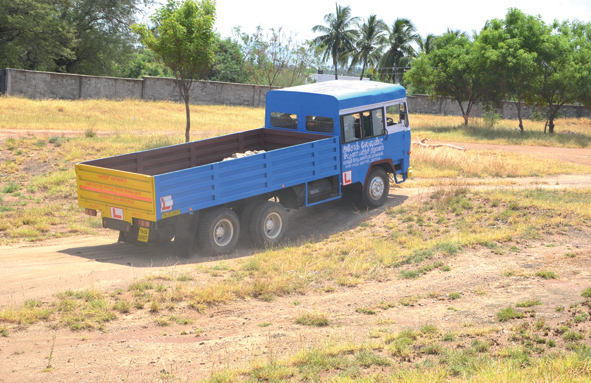 Ashok Leyland has a tie-up with VRL Logistics and Krishnapatnam Port Company Ltd. (KPCL) where it has two exclusive trainers for training drivers on products, road safety and fuel-efficient driving.
Ashok Leyland has a tie-up with VRL Logistics and Krishnapatnam Port Company Ltd. (KPCL) where it has two exclusive trainers for training drivers on products, road safety and fuel-efficient driving.
In order to improve the standard of driving in the country, the Government had announced a scheme in October 2010 to grant Rs. 16 crores to companies for setting up training institutes. The amount would be used to build the needed infrastructure while the vehicle manufacturer uses its vehicles and manpower for training and also takes care of the revenue and expenditure of the institute.
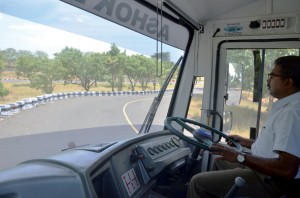 Ashok Leyland has already leveraged on the promising scheme and has training institutes coming up in Haryana, Bhubaneshwar, Madhya Pradesh and Rajasthan in the next few months. The company is also in discussion with the Karnataka and Tamil Nadu Governments, and is all set to have eight driver training institutes up and running by 2013.
Ashok Leyland has already leveraged on the promising scheme and has training institutes coming up in Haryana, Bhubaneshwar, Madhya Pradesh and Rajasthan in the next few months. The company is also in discussion with the Karnataka and Tamil Nadu Governments, and is all set to have eight driver training institutes up and running by 2013.
In an exclusive discussion, Mr. K.C. Balasubramanian, Asst. General Manager, Sales & Marketing Group, a veteran in the field, revealed some interesting statistics in related to driver shortage. Since 1980 when carrying goods in a 35-tonne truck needed permission from the Government, the transportation sector has undergone revolutionary changes. With greater focus on road infrastructure development, in keeping with the higher number of advanced vehicles plying on roads, the automotive industry seems to be facing severe shortage of drivers, particularly in the commercial vehicle segment.
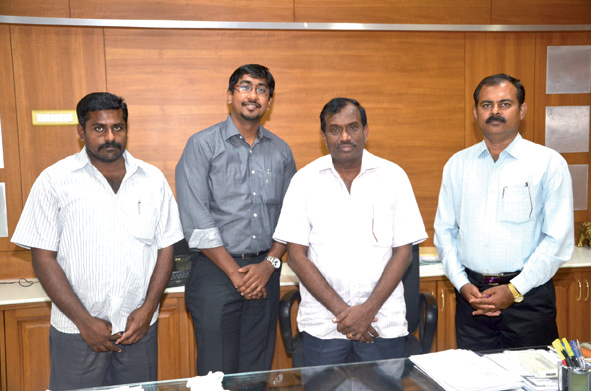
There are a number of reasons for the dearth, the main one being the status of driving as a profession in society. Drivers are usually treated with scant regard and are generally blamed for road accidents. With growing urbanisation and other more attractive jobs on offer, driving is often taken as a last resort.
Says Mr. Balasubramanian: “Driver is the most important person for transportation, but also the most neglected. Drivers should be trained to handle sophisticated vehicles, and two to three driver training institutes per State is the order of the day.”
Another important reason for poor availability of CV drivers is the switch-over of truck and bus drivers to passenger vehicles wherein they enjoy better amenities. Yet another key aspect is the driving challenges associated with the CV segment.
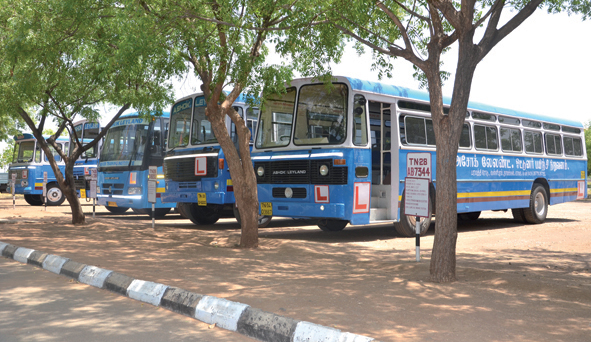 Currently around 10 per cent of the commercial vehicles are lying idle due to paucity of drivers. Statistics reveal that nearly two lakh drivers would be needed from 2012, and the figure is expected to jump to 2.4 lakhs in 2015. Another discomforting feature is that close to 80 per cent of road accidents are due to driver fault, necessitating more driver training initiatives. Introduction of GST is certain to help, as it would make life far simpler and more comfortable for drivers, particularly on the highways.
Currently around 10 per cent of the commercial vehicles are lying idle due to paucity of drivers. Statistics reveal that nearly two lakh drivers would be needed from 2012, and the figure is expected to jump to 2.4 lakhs in 2015. Another discomforting feature is that close to 80 per cent of road accidents are due to driver fault, necessitating more driver training initiatives. Introduction of GST is certain to help, as it would make life far simpler and more comfortable for drivers, particularly on the highways.
Customer perspective
Mr. K. Nallusamy, owner of Thenpandiyan Transport, has a fleet of 250 LPG tankers in Namakkal. His affinity to Ashok Leyland is unmistakable as seen from the fact that all his 250 vehicles are from the company.
“Ashok Leyland and we are almost inseparable and we have not tried any other vehicle since the vehicle performance is excellent. The resale value for the vehicles is also very good. Other advantages of sticking to one company are the interchangeability of drivers and spares, lesser inventory and easier maintenance by our trained mechanics, while the operational costs are also kept low”, says Mr. Nallusamy.
He adds: “The transport industry is severely affected by manpower shortage. Drivers and cleaners are not easily available as everybody is looking for a white-collar job. The industry is worried about the issue and unless there are drivers, vehicles cannot be sold. All the vehicle manufacturers should involve more in creating more drivers.”
An Ashok Leyland customer for many years, he lauded the company’s efforts towards driver training. “There has been tremendous improvement in the driver standard after the opening of the Driver Training Institute. When new vehicles were launched, drivers were updated with knowledge about the new technology such as new pumps and new ABS brakes in the institute”, he remarked.
He also stresses the need for more such driving institutes across the country to tap the huge resources of manpower, especially in the Northern States.
According to him, over the last few years, the percentage of accidents has come down considerably, which is an encouraging sign. If a few more issues are taken care of, the number of accidents could also be reduced further. With the better standard of vehicles and with advanced technology and safety features, it primarily lies in the hands of the driver community to reduce accidents. “NGOs should take up the issue and spread awareness among the public to follow traffic rules properly. The Government, NGOs, Transport Associations and other clubs have to take steps in this regard”.
His LPG transportation business is doing very well, and there is always scope for fleet expansion. However, the driver shortage issue has curbed his fleet expansion plans and for the past couple of years, despite his growing business, the fleet size has remained the same.
For LPG tankers, 35 tonnes is the highest allowed payload. Vehicles of over 40 tonnes are not allowed as an accident with such vehicles would cause heavier damage. There is no hard and fast rule in this aspect, but the Government does not permit such higher tonne vehicles due to safety standards. The Health, Safety, Environment & Quality (HSEQ) Department is much concerned with accidents, especially those related to LPG tankers, and conducts transport meetings once every six months for drivers and fleet owners to discuss relevant issues.
Expressing his views on the growing commercial vehicle segment in India, he says there is huge potential in the Indian market, and volumes would increase. The introduction of 50-tonne and 60-tonne vehicles will reduce the manpower cost. At the same time, the LCV segment will continue to grow.